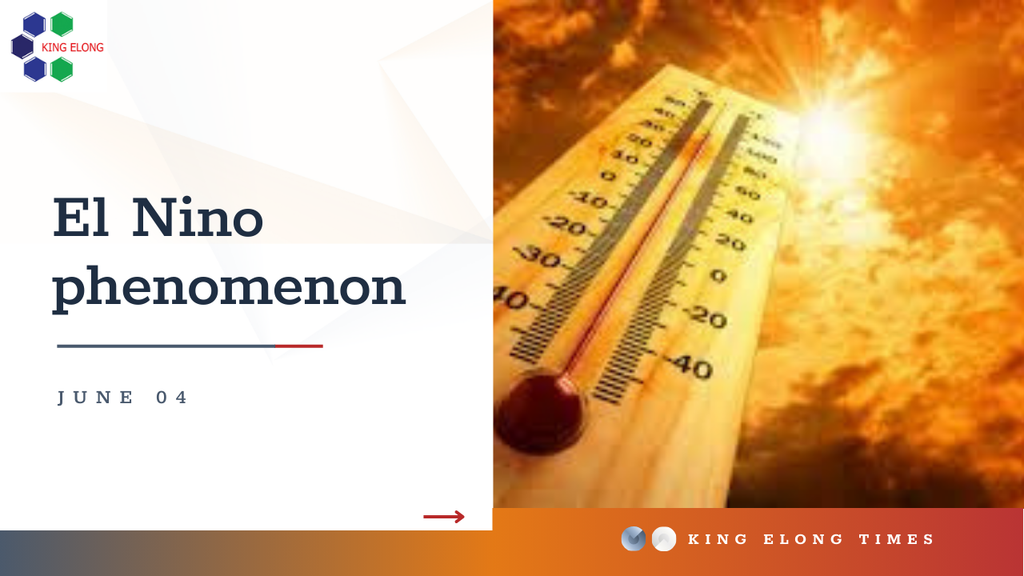
El Nino returns in the second half of 2023 – Vietnamese agriculture faces the risk of severe drought?
- Author: Đinh Hằng at
- Market news
According to the National Center for Hydrometeorological Forecasting (General Department of Hydrometeorology), the El Nino phenomenon will appear in the second half of the summer of 2023 and persist until 2024 with a probability of about 70-80%.
Overview of the situation and forecast of consequences of El Nino.
El Nino creates very widespread drought conditions. In the "Pre-El Nino" period - late 2022 to the first half of 2023, our country's weather had alternating rain and sunshine. However, the rainfall is very little compared to the average of many years, while the heat is increasing, leading to water shortages in reservoirs. For example, the water in Tri An hydroelectric reservoir during the dry season this year dropped sharply (the lowest in the past 12 years). Simultaneously, the water level of many other hydroelectric and irrigation reservoirs in the North has also decreased significantly in comparison with the average level of previous years. Therefore, according to many experts, Vietnam in general and Vietnam's Agriculture sector in particular will face the risk of water shortage, drought, and severe saltwater intrusion due to the impact of El Nino in 2024.
Vietnam has many areas that are very sensitive to El Nino, especially the Central Highlands, Mekong Delta, and Central region (including both North and South Central regions).
👉 In the Central Highlands, groundwater will decrease remarkably when there is a shortage of rainfall, causing great difficulties for people in growing crops and raising livestock.
👉 The Mekong Delta is at risk of facing a more intense situation when receiving two main water sources: on-site rainwater and water discharged from hydropower plants upstream of the Mekong River. However, currently, Ca Mau is only the province that receives the main source of on-site rainwater. Most other provinces receive water from the upper Mekong. Therefore, it can be said that the Mekong Delta is heavily dependent on water discharge from upstream. The upstream itself depends on rainfall in the western Truong Son of Vietnam, Laos, Myanmar, and China. Therefore, if there is little rainfall in those areas, combined with water regulation from hydroelectric reservoirs, drought, and fairly serious saltwater intrusion the Mekong Delta at the end of this year and early of next year will be inevitable.
👉 At the same time, the forecast also shows that the total area at risk of water shortage in the upcoming summer-autumn rice crop is about 10,000 - 15,000 hectares, including about 7,500 - 10,000 hectares in the North Central region, and 3,000 - 3,500 hectares in the South Central region.
Some plans to respond to the El Nino phenomenon
The normal cycle of El Nino is about 2 years and the instability of this number is increasingly evident. Our country's agricultural field needs to have long-term response plans, especially in the Mekong Delta, Central and Central Highlands regions.
👉 According to Mr. Nguyen Nhu Cuong - Director of the Department of Crop Production - said that the El Nino phenomenon is forecast to last for about 2 years and is likely to cause a terrible drought in the Mekong Delta and other areas. Therefore, we need to build specific monthly and quarterly plans from now. It is necessary to assess which areas are severely affected, the water supply capacity for production in these places, as well as identifying key drought-prone areas, having water resource forecasts from now until 2025 and even 2026 to proactively find solutions immediately.
👉 Prof. Dr. Tran Dinh Hoa - Director of the Vietnam Institute of Irrigation Sciences - also said that it is necessary to build a framework and scenarios at many levels to closely follow the direction and manage the response every year. Besides, more monitoring points and assessments should be installed to provide forecasts and warnings about drought and saltwater intrusion.

